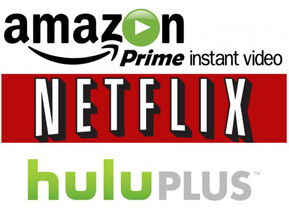Intermittent Issues: I, For One, Welcome Our New Binary Overlords
By Ben Gruchow
November 10, 2016
HDX uses a proprietary Vudu procedure called TruFilm, which in most ways is a fancy way of saying that it performs similar algorithmic inspection of each title to Netflix. The difference is in the variability of the bitrate; Netflix encodes its titles over a hundred times to find the best balance between bitrate and quality, but the encode is still then completed as a constant. Vudu deploys selectively variable bit rates, with its TruFilm algorithm searching for and targeting areas of a title that contain bit-intensive activity (fast motion, high contrast, complicated visual effects), and allocating an increased bit budget specifically to those parts of the overall title in order to increase perceived clarity and quality. It deploys Dolby Digital Plus, but it does so at a higher bitrate and with support for 7.1 sound (on newer titles, at least); Vudu takes it a step further with Ultra HD titles and encodes those as Dolby Atmos.
The TruFilm procedure and the HDX designation are not idle buzzwords; the jump in quality is large enough that when the designation was introduced in 2008, titles purchased had to be downloaded before they’d play. The bitrate involved here is already more versatile than Netflix’s owing to the variability, but the average bitrate is also higher. Accordingly, I judge the video quality of an HDX title as superior to any other streaming format at the present time, and one that comes the closest to capturing the same sense of depth and color as a Blu-ray disc. Audio is similarly advantaged, with the greater bitrate allowing for more dynamic range and better separation between channels.
The five content providers outlined above are so included to give us an idea of how to properly assess HD cinema is in a streaming context. That assessment appears to be that streaming is in all likelihood actually the successor to physical media that it’s been marketed as being, particularly when it comes to Ultra HD/4K material. This is not something I would have identified as a conclusion based on Hulu/Netflix/Amazon video quality of five years ago, nor of Vudu’s pre-HDX offerings, and in a way that paints a clearer picture of one way in which the ephemeral nature of digital content provides an immeasurable advantage: the provider has the ability to improve fidelity, color depth, and resolution for a title within the context of that title’s existing presence. Remember the initial Blu-ray release of Luc Besson’s The Fifth Element? The video quality was not only inferior to the HD material released around it, but arguably worse than the Collector’s Edition DVD that had come out a year or two prior.
Sony eventually fixed the issue by striking a new Blu-ray from a better master, and for a period of time would-be viewers had to differentiate between the bad copy and the good copy by way of a production number on the back of the exterior case. If we transpose this scenario to Vudu, the route to resolution is invisible: Sony would strike a new HDX encode, and it would simply be linked to the same electronic key as the old encode while the old file is ditched. The user sees a substandard product one day and an improved product the next.
Continued:
1
2
3
4
5
6
7




